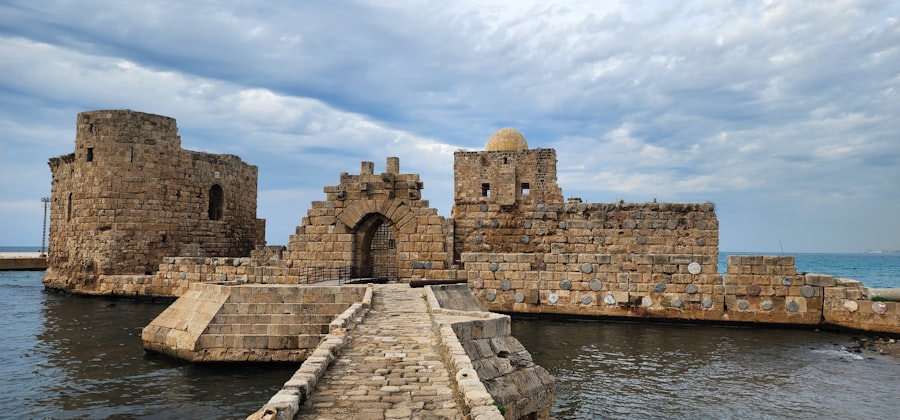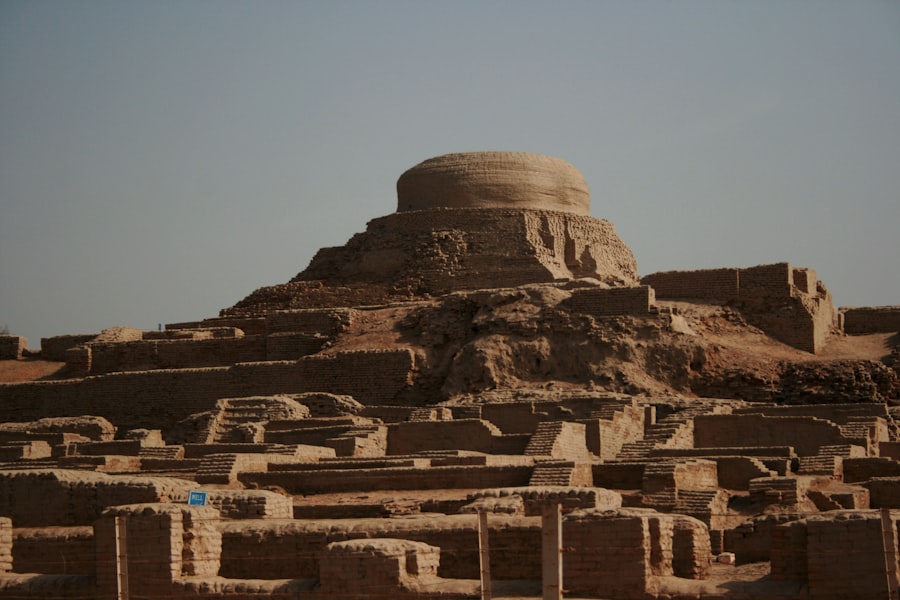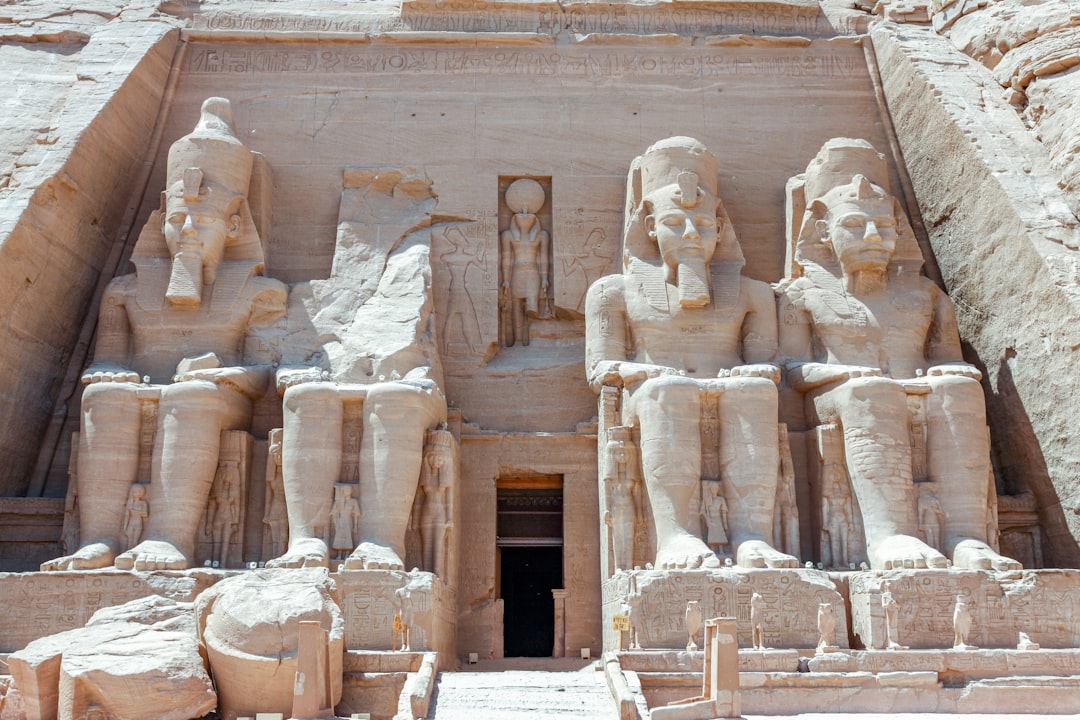Throughout history, humanity has witnessed the rise and fall of numerous civilizations, many of which have left behind remnants that continue to intrigue scholars and enthusiasts alike. Lost ancient civilizations, in particular, evoke a sense of mystery and wonder, as they often embody the pinnacle of human achievement in various fields such as architecture, engineering, and culture. These societies, which flourished and then seemingly vanished, challenge modern understanding and invite speculation about their contributions to human history.
The allure of these lost worlds lies not only in their monumental structures and artifacts but also in the stories they tell about the people who once inhabited them. The fascination with lost civilizations is fueled by the tantalizing clues they leave behind—ruins that speak of advanced knowledge, intricate social structures, and rich cultural practices. From the enigmatic pyramids of Egypt to the sophisticated urban planning of the Indus Valley, these remnants serve as a testament to human ingenuity.
As researchers delve deeper into archaeological sites and ancient texts, they uncover layers of history that reveal the complexities of these societies. The quest to understand lost civilizations is not merely an academic pursuit; it is a journey into the very essence of what it means to be human. Here is the link to the Antikythera Mechanism documentary: Antikythera Mechanism documentary.
Key Takeaways
- Lost ancient civilizations continue to fascinate and intrigue people around the world, sparking curiosity about their advanced knowledge and mysterious disappearance.
- The advanced architectural structures of pyramids, Machu Picchu, and Mohenjo-Daro showcase the engineering and construction capabilities of these lost civilizations.
- Mysterious engineering and construction techniques used by ancient civilizations continue to baffle modern researchers, raising questions about their knowledge and skills.
- Ancient texts and myths provide valuable clues and insights into the existence and practices of lost civilizations, offering a glimpse into their culture and society.
- Theories and speculations about lost ancient civilizations abound, with researchers and experts exploring various possibilities and scenarios to unravel the mysteries of the past.
Advanced Architectural Structures: Pyramids, Machu Picchu, and Mohenjo-Daro
Among the most iconic symbols of lost ancient civilizations are their architectural marvels. The pyramids of Egypt stand as monumental testaments to the engineering prowess of the ancient Egyptians. Constructed over 4,500 years ago, these structures were not only tombs for pharaohs but also reflections of their beliefs in the afterlife and the divine.
The precision with which these massive stones were cut and assembled continues to baffle modern architects and engineers. The Great Pyramid of Giza, for instance, was originally 146.6 meters tall and was the tallest man-made structure for over 3,800 years. Its alignment with celestial bodies suggests a sophisticated understanding of astronomy that was far ahead of its time.
Similarly, Machu Picchu, nestled high in the Andes Mountains of Peru, showcases the ingenuity of the Inca civilization. This site, often referred to as the “Lost City of the Incas,” is renowned for its dry-stone construction techniques that have withstood centuries of earthquakes and erosion. The terraced fields and intricate water management systems highlight the Incas’ deep connection to their environment and their ability to adapt to challenging landscapes.
Mohenjo-Daro, one of the largest settlements of the Indus Valley Civilization, further exemplifies advanced urban planning with its grid-like streets and sophisticated drainage systems. These architectural achievements not only reflect the technological advancements of their respective cultures but also provide insight into their social organization and daily life.
Mysterious Engineering and Construction Techniques

The construction techniques employed by these ancient civilizations remain a subject of fascination and debate among historians and archaeologists. The methods used to transport massive stones for the pyramids, for instance, are still not fully understood. Some theories suggest that workers used sledges lubricated with water to reduce friction, while others propose that they may have employed a system of ramps or levers.
The sheer scale of these projects indicates a highly organized workforce and advanced logistical planning that challenges contemporary assumptions about ancient labor practices. Inca engineering is equally remarkable, particularly in its use of local materials and adaptation to the mountainous terrain. The Incas mastered the art of stone masonry, creating structures that fit together so perfectly that even a knife blade cannot be inserted between them.
This technique not only provided stability but also allowed buildings to withstand seismic activity—a testament to their understanding of geology and engineering principles. Similarly, the drainage systems in Mohenjo-Daro demonstrate an advanced grasp of hydraulics, with evidence suggesting that the city had a sophisticated network for managing water supply and waste disposal. These engineering feats raise questions about the knowledge transfer between civilizations and how such techniques were developed independently across different cultures.
Ancient Texts and Myths: Clues to Lost Civilizations
| Text or Myth | Origin | Clues to Lost Civilizations |
|---|---|---|
| Epic of Gilgamesh | Ancient Mesopotamia | Descriptions of advanced technology and knowledge |
| Atlantis | Plato’s dialogues | Speculations about an advanced ancient civilization |
| Egyptian Book of the Dead | Ancient Egypt | Beliefs about the afterlife and advanced knowledge |
Ancient texts and myths serve as invaluable resources for piecing together the narratives of lost civilizations. Many cultures left behind written records that provide insights into their beliefs, practices, and historical events. For instance, the Epic of Gilgamesh from Mesopotamia offers glimpses into early human thought regarding mortality and civilization’s quest for immortality.
Similarly, ancient Egyptian hieroglyphs reveal not only religious beliefs but also administrative practices that governed daily life. Myths often contain kernels of truth about historical events or societal values. The story of Atlantis, as recounted by Plato, has captivated imaginations for centuries.
While many consider it a fictional tale, some researchers speculate that it may have been inspired by real civilizations that experienced catastrophic events leading to their demise. Such narratives encourage exploration into how ancient peoples understood their world and how they interpreted natural disasters or societal changes. By examining these texts and myths, scholars can glean insights into lost civilizations’ cultural identities and their interactions with neighboring societies.
Theories and Speculations About Lost Ancient Civilizations
Theories surrounding lost ancient civilizations abound, each offering unique perspectives on why these societies vanished or transformed over time. Some scholars propose environmental factors as primary culprits; climate change, natural disasters, or resource depletion could have led to societal collapse. For example, the decline of the Maya civilization is often attributed to prolonged droughts that severely impacted agriculture and water supply.
Other theories focus on social dynamics or external pressures as potential causes for decline.
The fall of the Roman Empire is frequently cited as an example where a combination of economic troubles, military overreach, and political corruption contributed to its eventual disintegration. These speculations highlight the complexity of societal evolution and challenge simplistic narratives about progress or decline.
The Role of Archaeological Discoveries in Unraveling Ancient Mysteries

Archaeological discoveries play a crucial role in illuminating the lives of lost civilizations. Excavations at sites like Pompeii have provided remarkable insights into daily life during the Roman Empire, revealing everything from culinary practices to social hierarchies through preserved artifacts and structures. Each find adds another piece to the puzzle, allowing researchers to reconstruct historical narratives that were once lost to time.
Moreover, advancements in technology have revolutionized archaeological methods. Techniques such as ground-penetrating radar and satellite imagery enable archaeologists to identify potential sites without extensive excavation. This non-invasive approach has led to significant discoveries in places like Angkor Wat in Cambodia, where hidden structures were revealed beneath dense jungle canopies.
As technology continues to evolve, it promises to unlock even more secrets from ancient pasts, providing a clearer picture of how these civilizations functioned and ultimately faded away.
Exploration of Underwater Ruins and Lost Cities
The exploration of underwater ruins has opened new frontiers in understanding lost civilizations. Many ancient cities are believed to have been submerged due to rising sea levels or catastrophic events such as earthquakes or tsunamis. Sites like Yonaguni in Japan have sparked debates about whether they are remnants of an ancient civilization or natural formations.
Underwater archaeology has become an essential field for uncovering these submerged histories. The discovery of cities like Dwarka off the coast of India has provided compelling evidence for advanced maritime cultures that thrived long ago. Artifacts recovered from underwater sites often include pottery, tools, and remnants of structures that offer insights into trade networks and cultural exchanges between civilizations separated by vast oceans.
As researchers continue to explore these underwater landscapes, they may uncover more about how ancient peoples adapted to changing environments and interacted with one another across great distances.
The Influence of Lost Civilizations on Modern Society
The legacies of lost civilizations continue to shape modern society in profound ways. Architectural styles inspired by ancient designs can be seen in contemporary buildings around the world; for instance, neoclassical architecture draws heavily from Greek and Roman influences. Additionally, many modern governance systems reflect principles established by ancient societies—democracy in Athens or legal codes from Mesopotamia serve as foundational elements in contemporary political thought.
Cultural practices also bear traces of ancient traditions; festivals, rituals, and even culinary practices often have roots in long-lost civilizations. The resurgence of interest in sustainable agriculture can be traced back to ancient farming techniques employed by societies like the Incas or Mesopotamians who developed sophisticated irrigation systems long before modern technology emerged. By studying these lost civilizations, modern society can glean valuable lessons about resilience, adaptability, and sustainability.
The Search for Lost Ancient Civilizations in Remote and Unexplored Regions
The quest for lost ancient civilizations is far from over; remote regions continue to hold secrets waiting to be uncovered. Dense jungles in Central America or arid deserts in North Africa may conceal remnants of societies that thrived long ago but remain hidden from view due to challenging terrain or lack of resources for exploration. Recent advancements in technology have made it possible for researchers to survey these areas more effectively than ever before.
In places like the Amazon rainforest, researchers are beginning to uncover evidence suggesting that complex societies existed long before European contact—contradicting previous assumptions about indigenous peoples living solely as hunter-gatherers. Similarly, ongoing explorations in regions like Mongolia or Siberia may reveal connections between cultures previously thought isolated from one another. As archaeologists venture into these unexplored territories armed with new tools and methodologies, they may rewrite history books with discoveries that challenge existing narratives about human civilization.
The Enigmatic Disappearance of Advanced Civilizations
The disappearance of advanced civilizations remains one of history’s most enigmatic puzzles. While some societies left behind clear records detailing their decline—such as inscriptions warning future generations—others vanished without a trace, leaving only ruins as evidence of their existence. This phenomenon raises questions about what constitutes a civilization’s success or failure; is it merely survival over time or something more profound?
The case studies of various civilizations illustrate different paths toward disappearance: some succumbed to environmental changes while others faced internal collapse or external conquest. The fate of the Ancestral Puebloans in North America serves as a poignant example; after thriving for centuries in what is now the southwestern United States, they abandoned their cliff dwellings around 1300 AD—possibly due to prolonged droughts or resource depletion—leaving behind an enduring mystery regarding their ultimate fate.
Lessons from Lost Ancient Civilizations: What Can We Learn from the Past?
Lost ancient civilizations offer invaluable lessons for contemporary society grappling with its own challenges—be it climate change, social inequality, or political instability. By studying how these societies adapted (or failed to adapt) to changing circumstances, modern individuals can glean insights into resilience and innovation amidst adversity. For instance, understanding how ancient agricultural practices promoted sustainability can inform current efforts toward food security.
Moreover, examining social structures within these civilizations can shed light on issues such as governance models or community organization—providing frameworks for addressing contemporary societal challenges through collaboration rather than division. Ultimately, lost ancient civilizations remind humanity that history is not merely a record of past events but a rich tapestry woven from diverse experiences—each thread contributing to our collective understanding of what it means to be human. In conclusion, exploring lost ancient civilizations reveals not only their remarkable achievements but also their enduring legacies that continue to shape modern society today.
Through archaeological discoveries, analysis of ancient texts, and ongoing research into unexplored regions, humanity stands on the brink of uncovering even more secrets from our shared past—each revelation offering new perspectives on our journey forward into an uncertain future.
Recent discoveries have sparked interest in the possibility of lost ancient civilizations, with evidence suggesting advanced societies may have existed long before recorded history. For a deeper exploration of this topic, you can read the article on XFile Findings, which delves into various archaeological findings and theories surrounding these enigmatic cultures.
WATCH THIS! The Antikythera Mechanism Is Not Human Tech
FAQs
What is the evidence of a lost ancient civilization?
The evidence of a lost ancient civilization includes archaeological findings such as advanced architectural structures, intricate artwork, advanced technology, and written records that suggest a highly developed society that existed in the distant past.
What are some examples of evidence of a lost ancient civilization?
Examples of evidence of a lost ancient civilization include the ruins of advanced cities like Machu Picchu and Petra, intricate carvings and artwork found in ancient temples and tombs, advanced irrigation and engineering systems, and ancient texts and scripts that indicate a sophisticated level of knowledge and culture.
Why is the evidence of a lost ancient civilization important?
The evidence of a lost ancient civilization is important because it challenges our understanding of human history and the development of civilization. It suggests that there may have been advanced societies that existed in the past, which could have had a significant impact on the development of later civilizations.
What are some theories about the existence of a lost ancient civilization?
Some theories about the existence of a lost ancient civilization include the idea of a highly advanced and technologically sophisticated society that was wiped out by a natural disaster, such as a comet impact or a massive flood. Other theories suggest that ancient civilizations may have had contact with extraterrestrial beings or possessed knowledge that has been lost to time.
What are some challenges in studying and understanding a lost ancient civilization?
Challenges in studying and understanding a lost ancient civilization include the limited availability of archaeological evidence, the difficulty in interpreting ancient texts and symbols, and the lack of consensus among scholars about the interpretation of the available evidence. Additionally, the erosion and destruction of ancient sites over time can make it challenging to piece together a complete picture of these lost civilizations.
